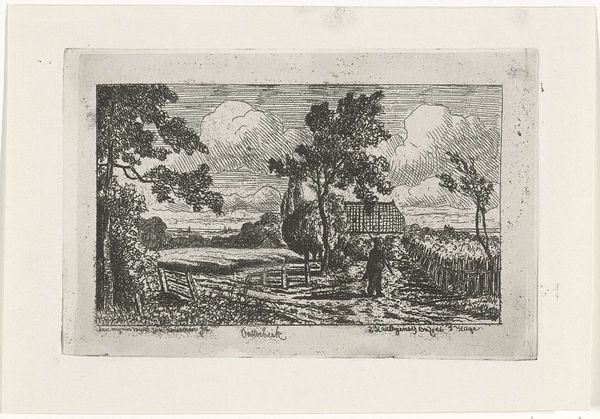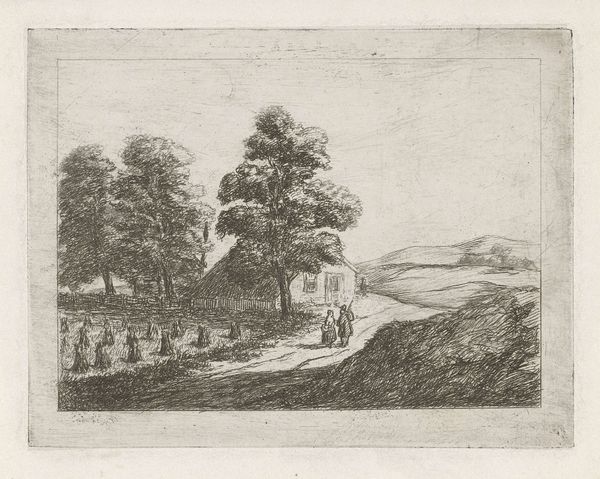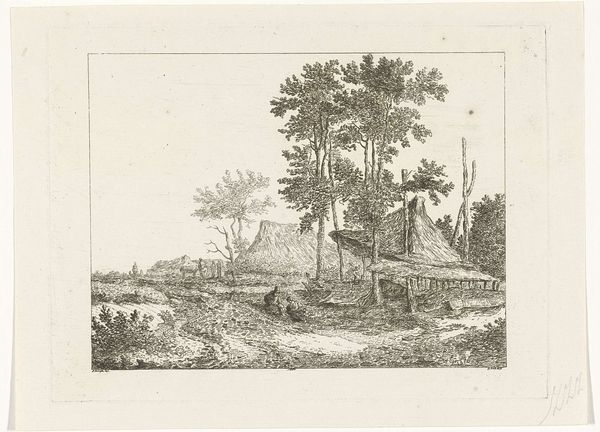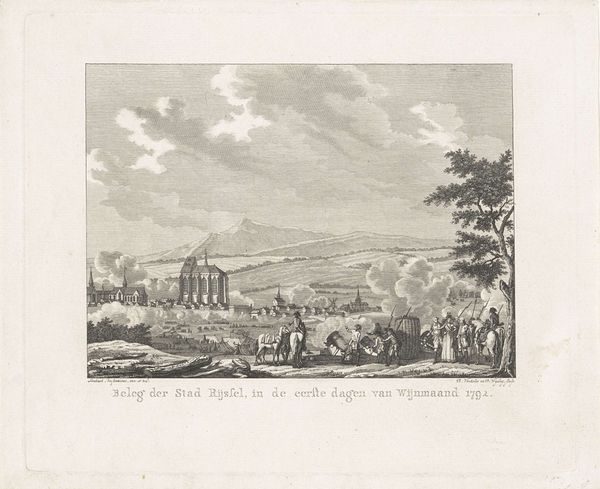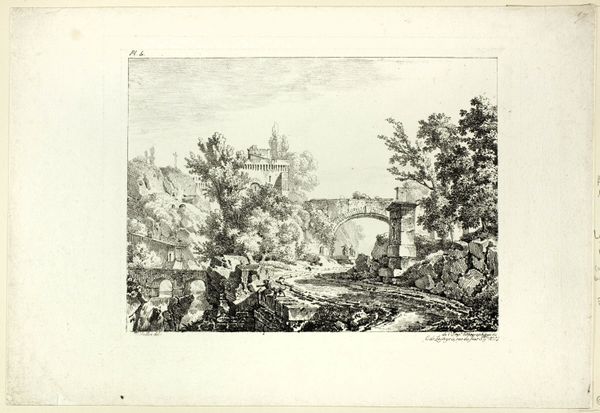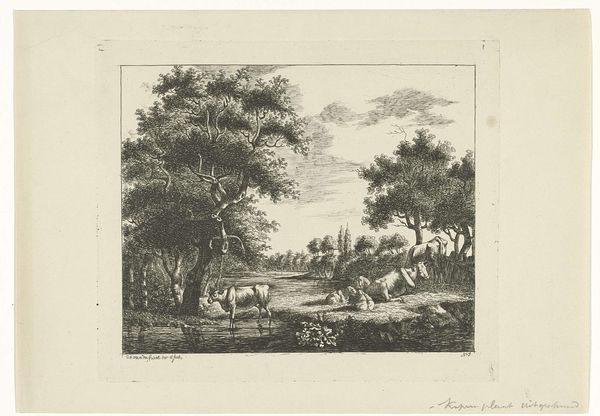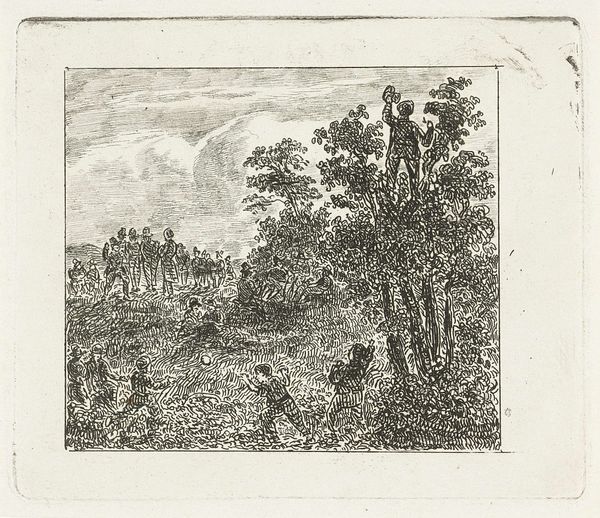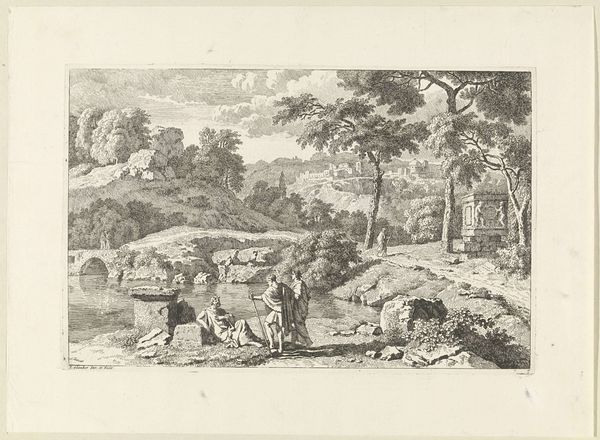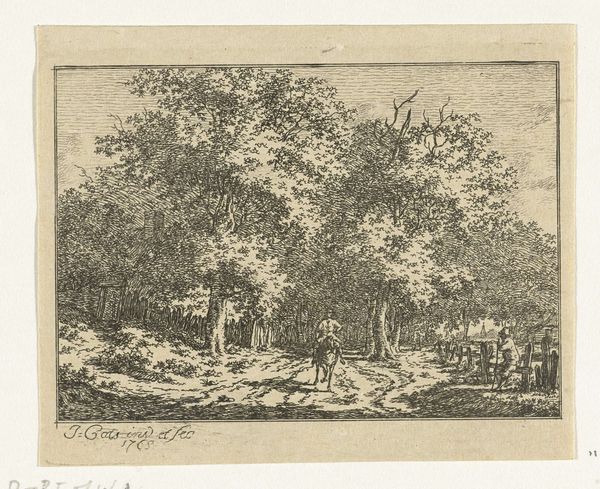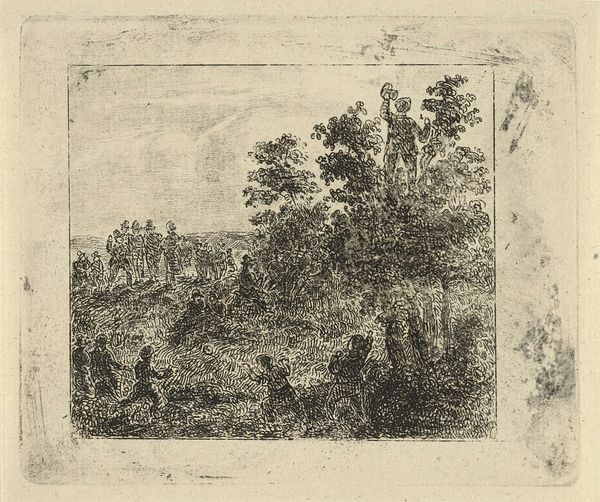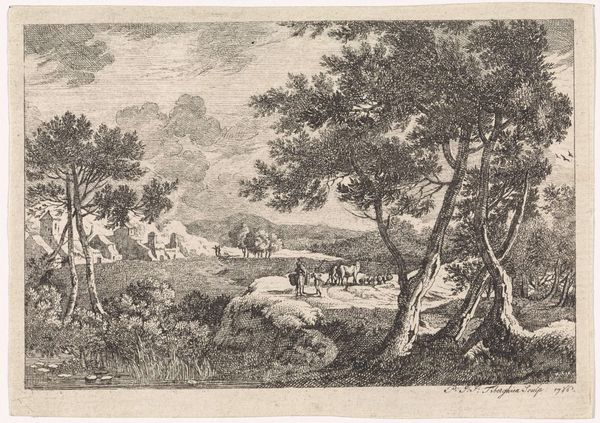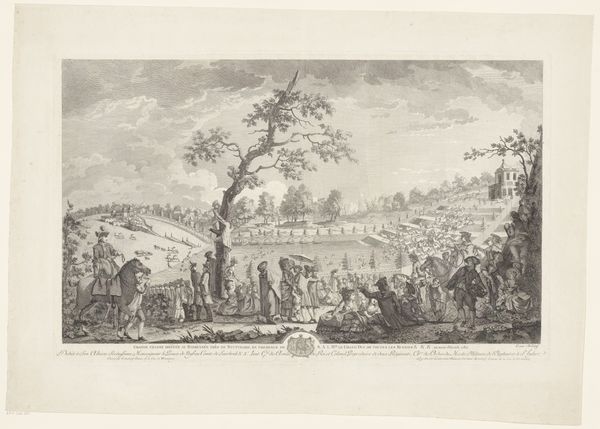
etching, engraving, architecture
#
dutch-golden-age
#
etching
#
old engraving style
#
landscape
#
personal sketchbook
#
engraving
#
architecture
Dimensions: height 106 mm, width 168 mm
Copyright: Rijks Museum: Open Domain
Cornelis Elandts made this etching of Huis Ten Bosch. In etching, a metal plate is coated with a waxy ground. The artist then scratches an image into this ground, exposing the metal. The plate is then immersed in acid, which bites into the exposed lines, creating grooves. Ink is applied to the plate, filling the etched lines, and the surface is wiped clean. Finally, paper is pressed onto the plate, transferring the ink and creating the print. The process allows for intricate detail and delicate lines, and the quality of the line gives this print its character. Look closely, and you can see the artist's hand in every stroke. The architecture is rendered with precision, while the surrounding foliage has a more fluid, organic quality. Prints like these were commercial products, part of a thriving industry that democratized images and ideas. The act of etching speaks to a desire to capture and share aspects of the world, and the labor and skill involved in this process gives the image a social and cultural significance beyond its mere depiction.
Comments
No comments
Be the first to comment and join the conversation on the ultimate creative platform.
